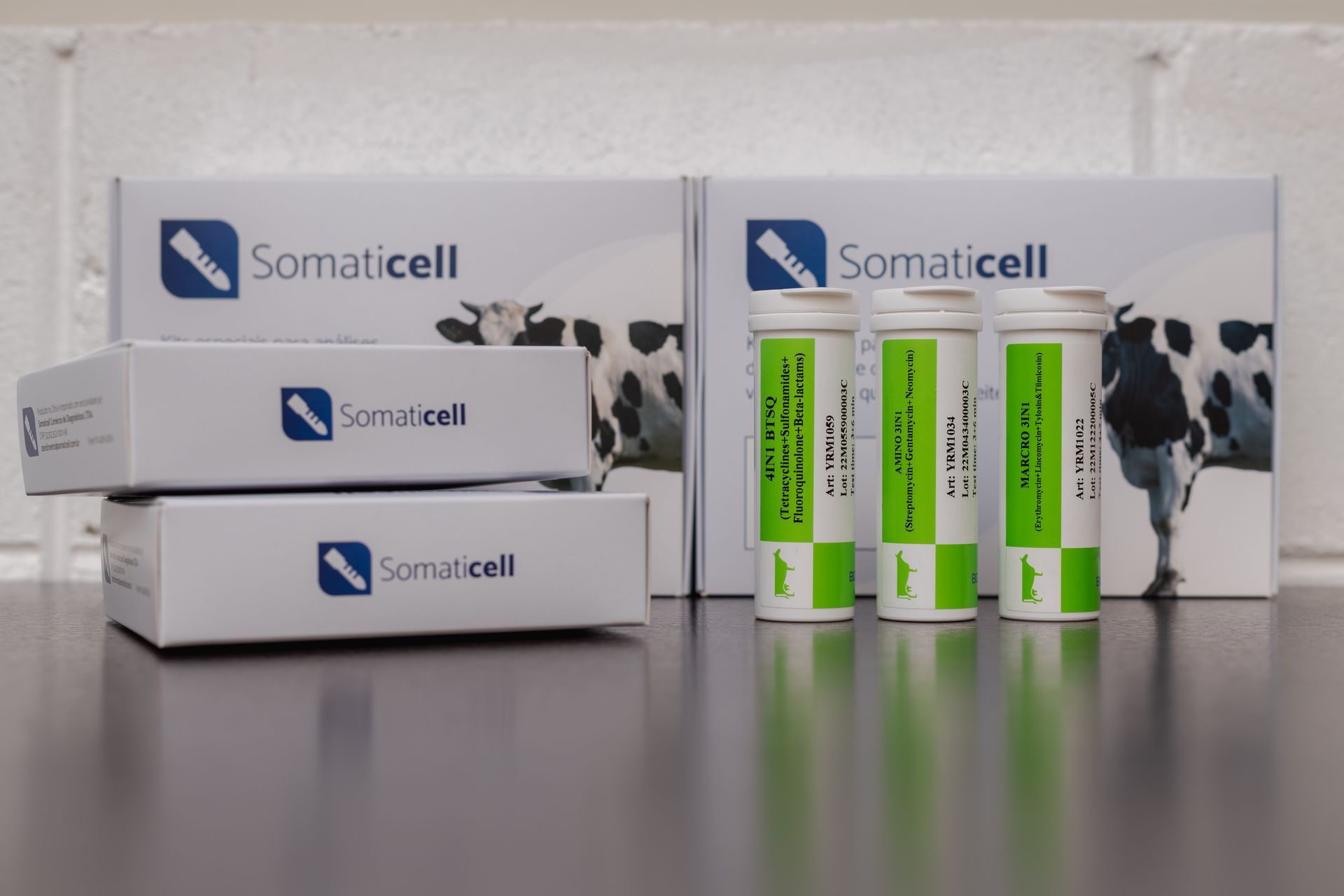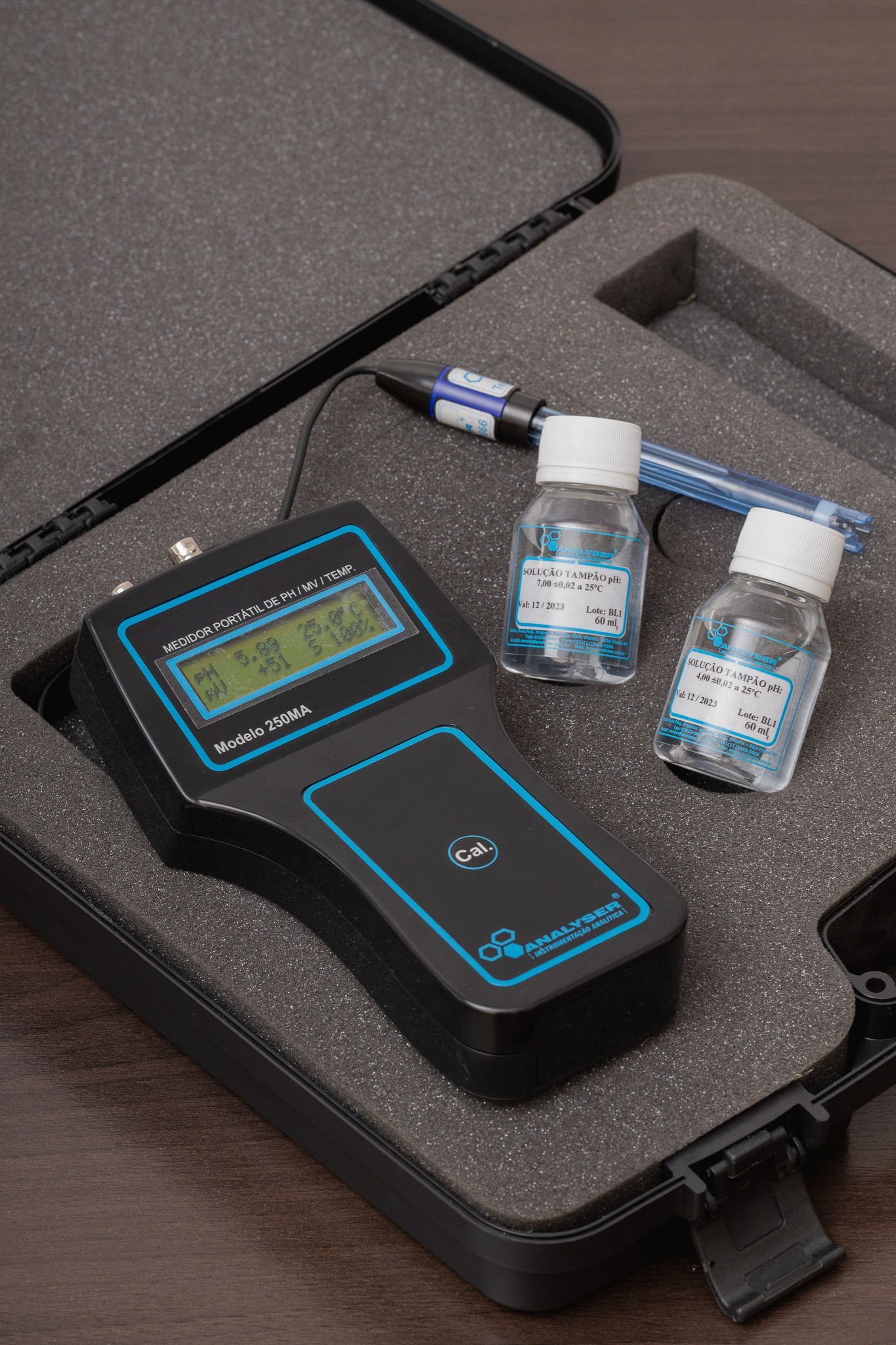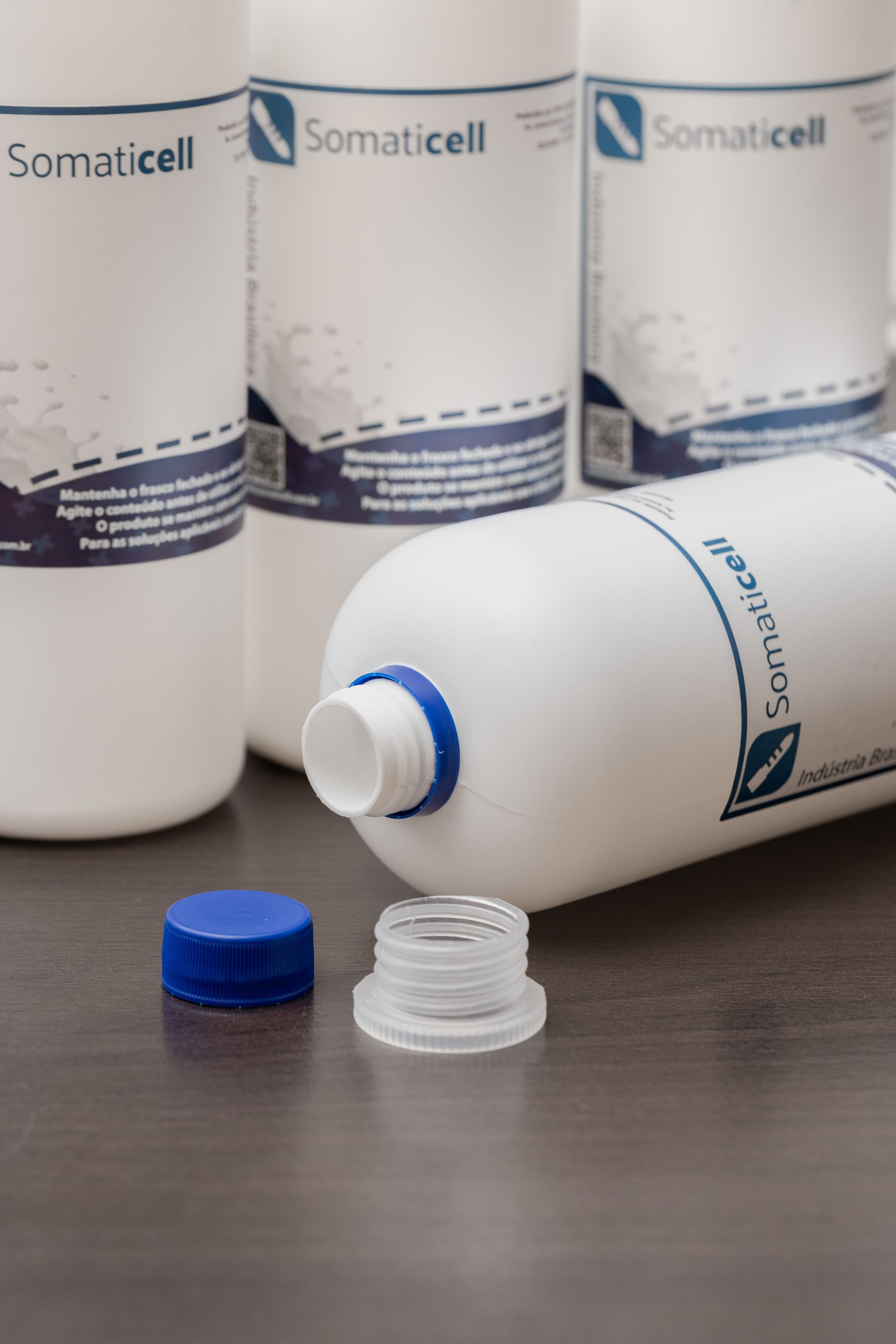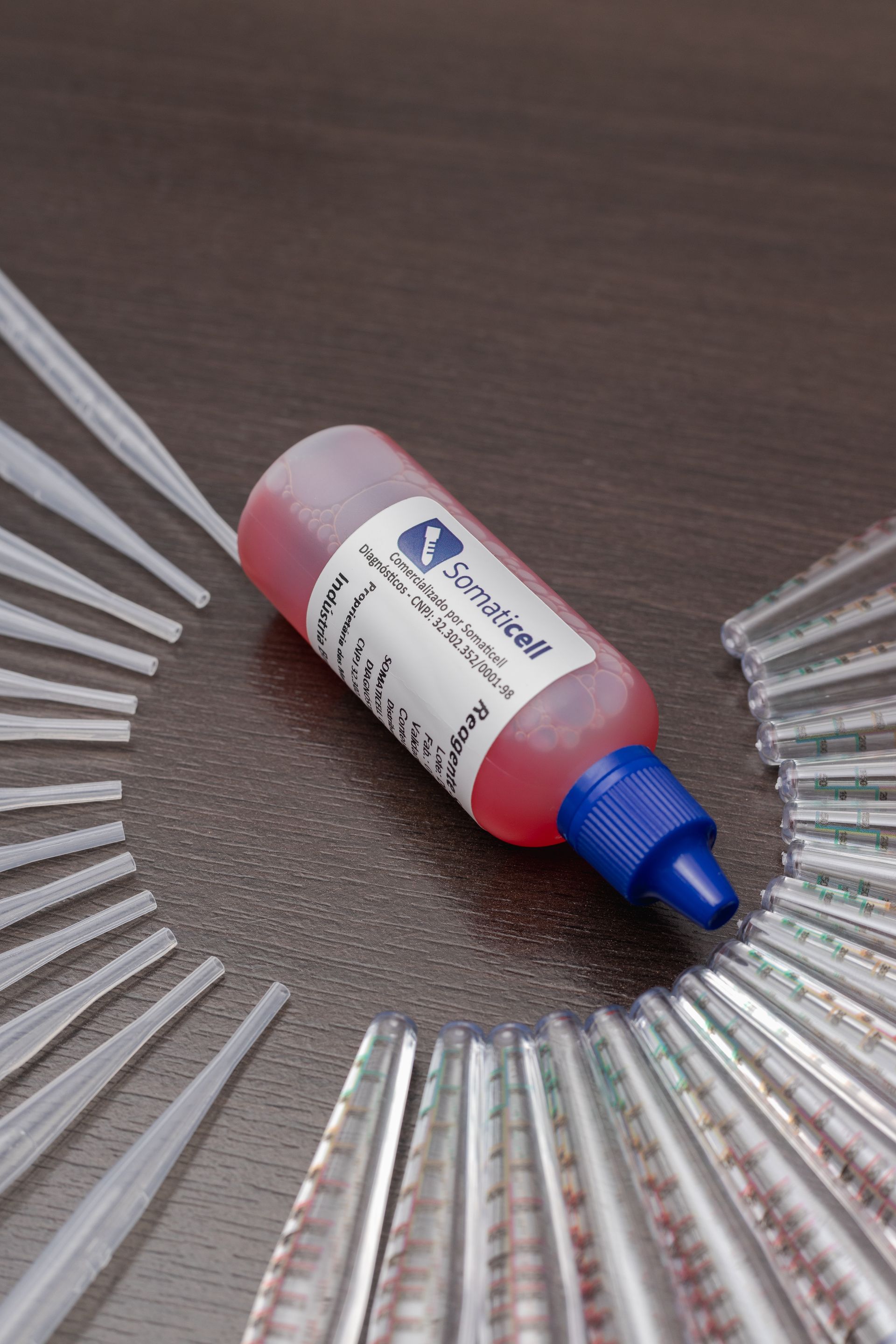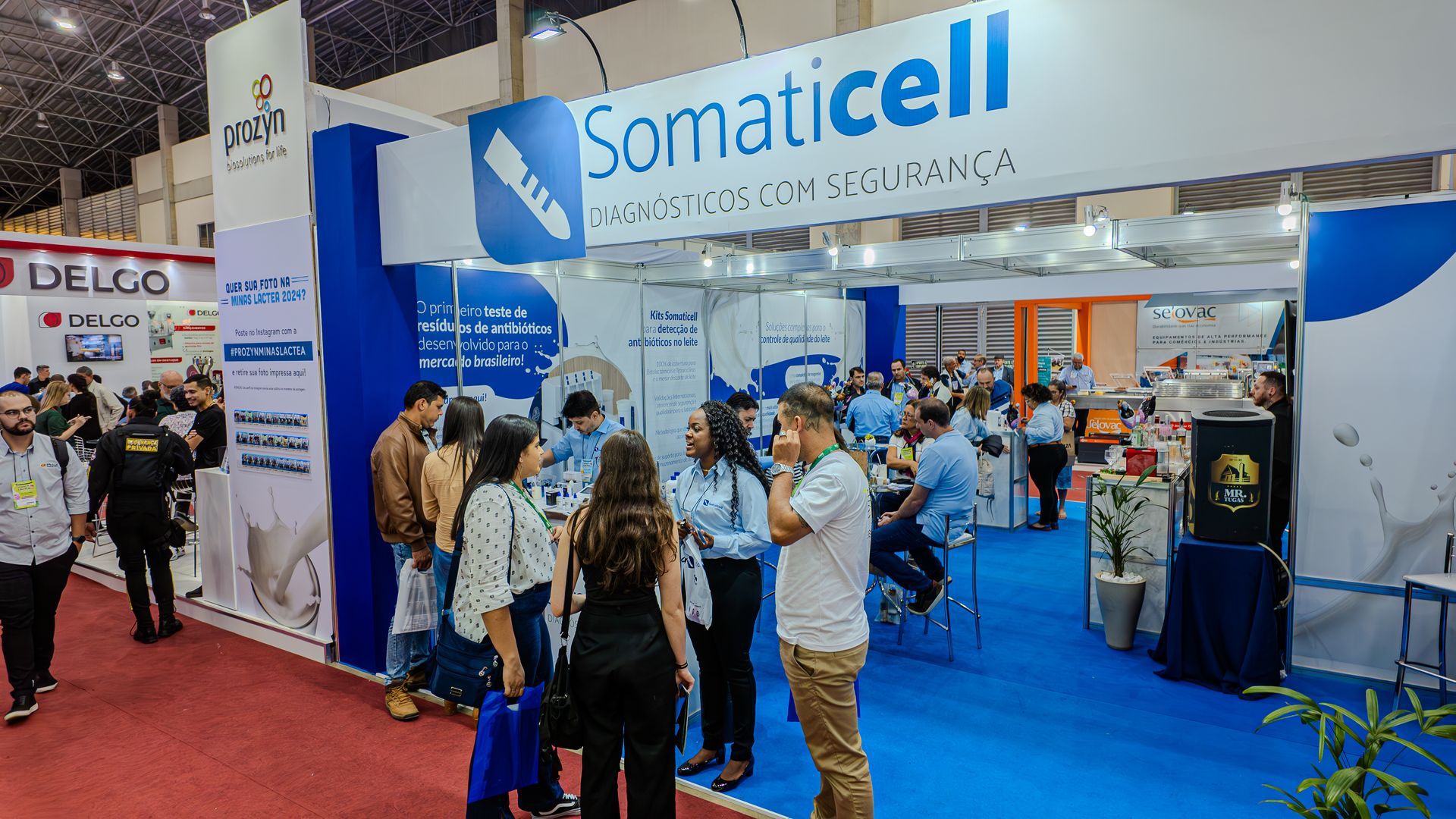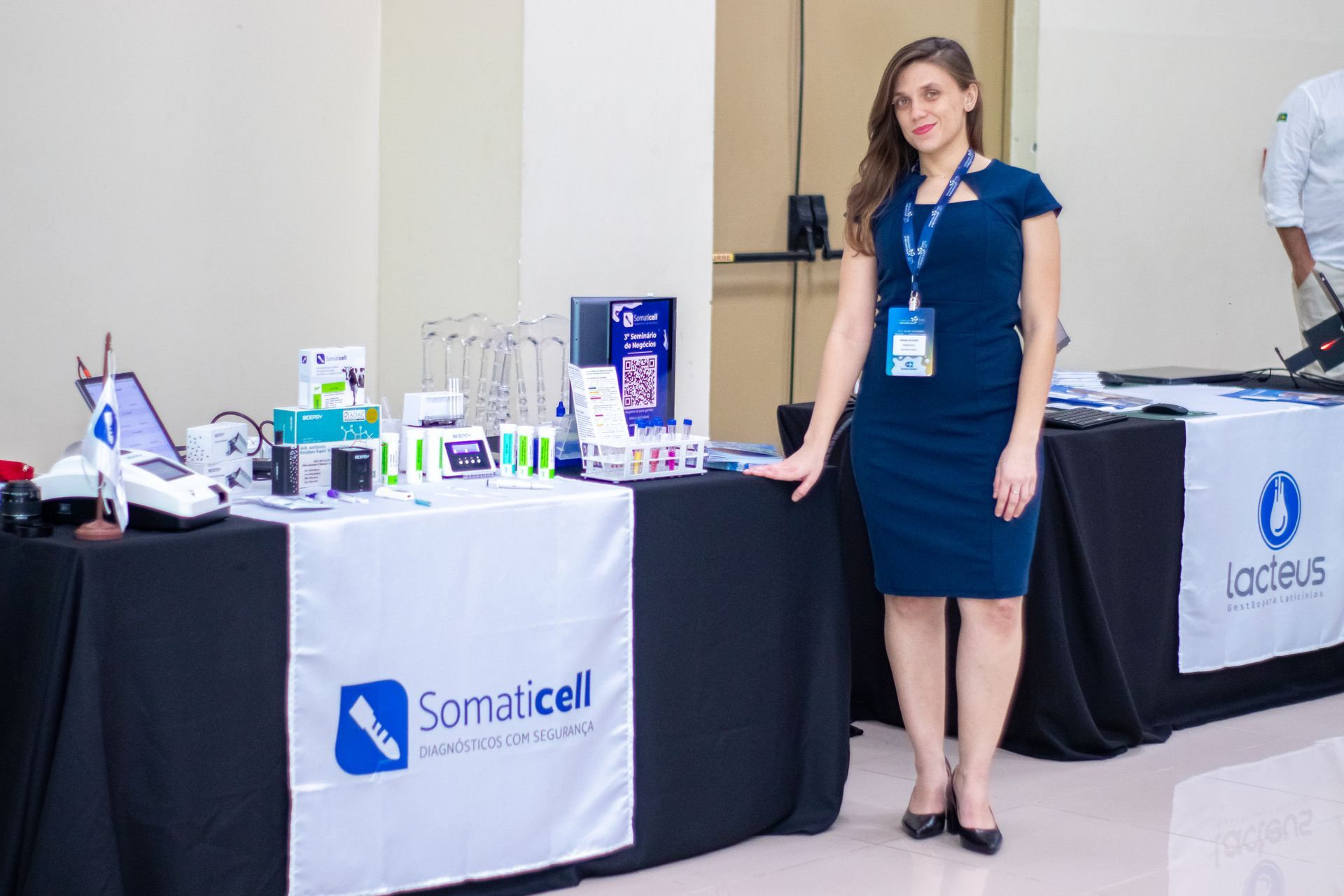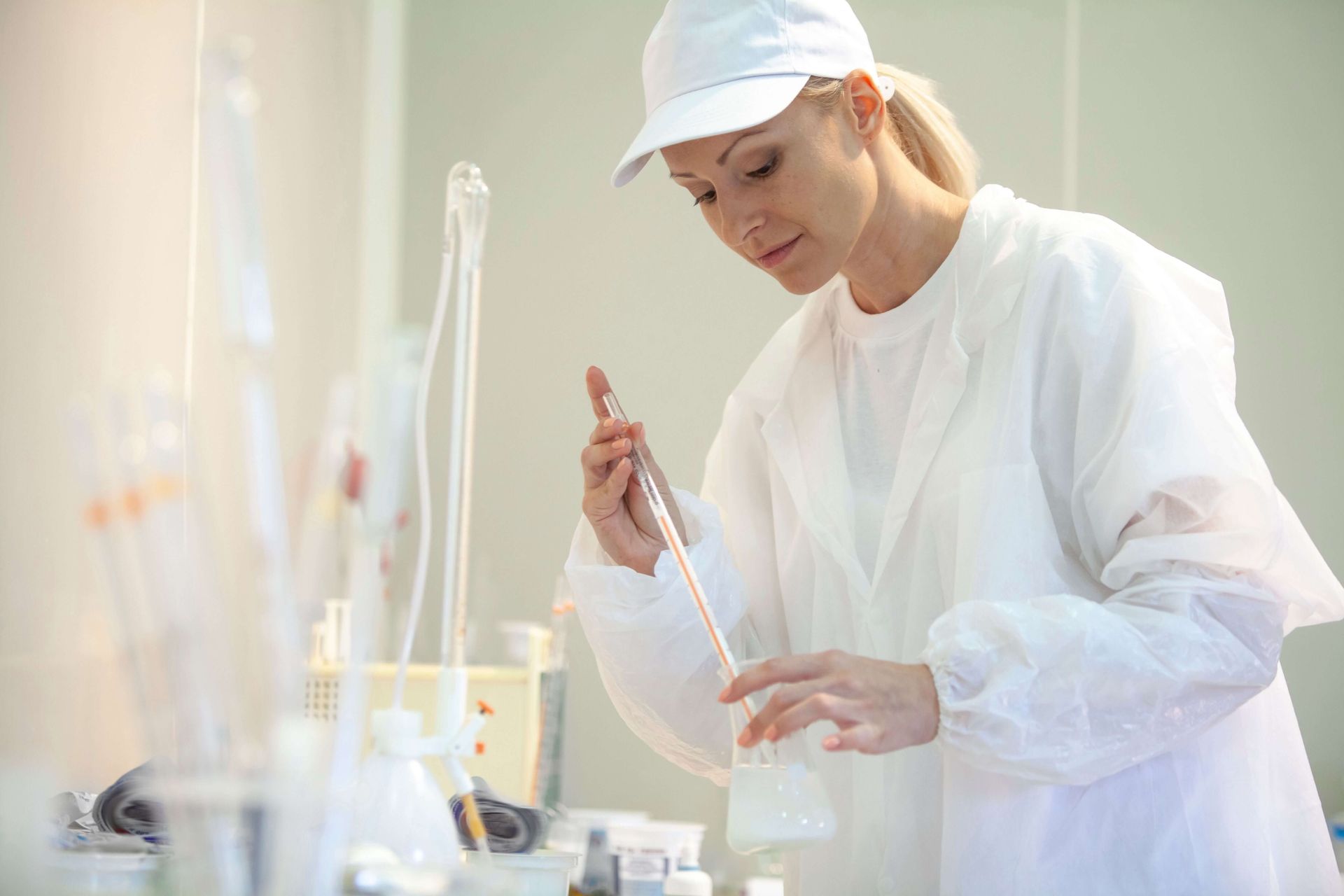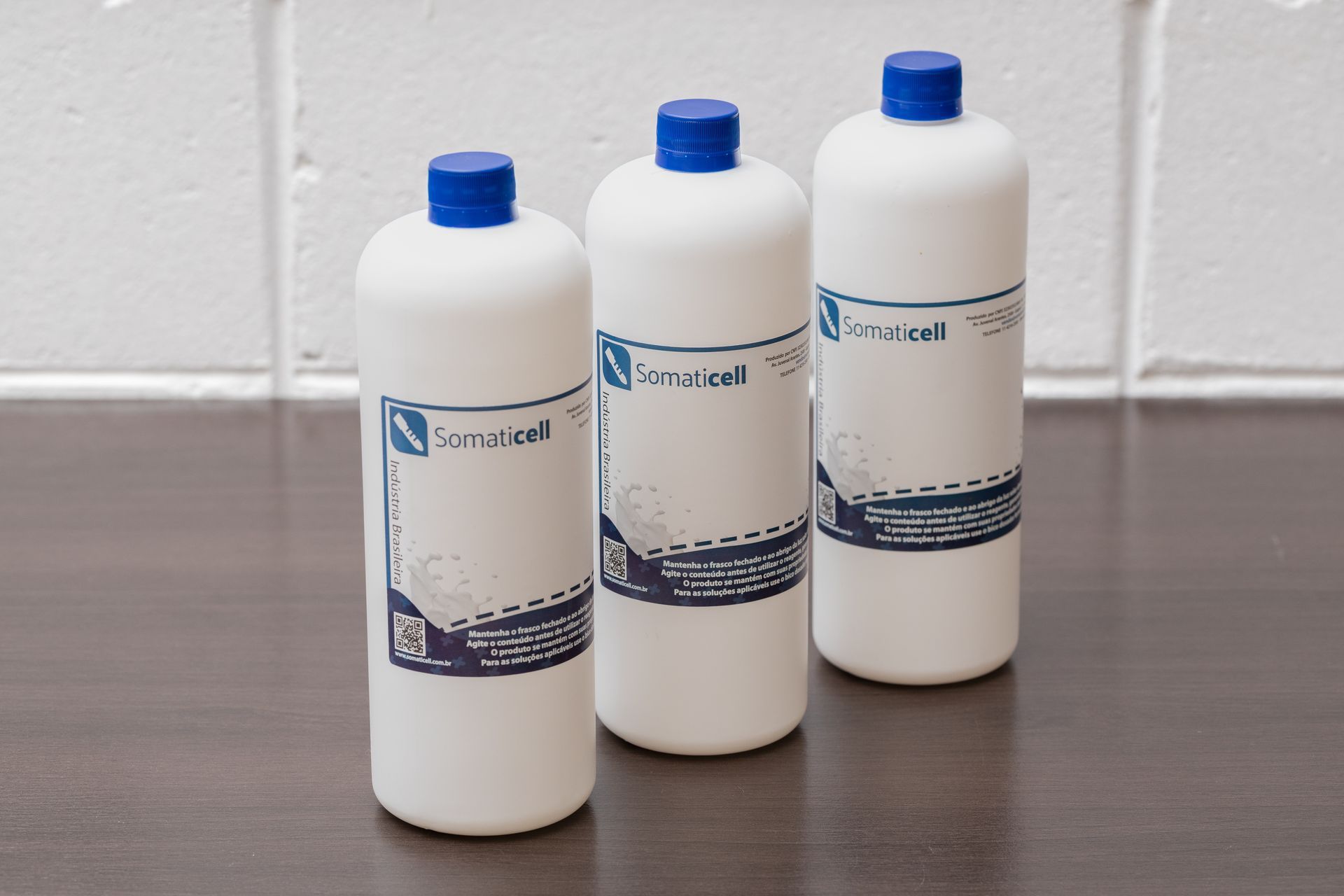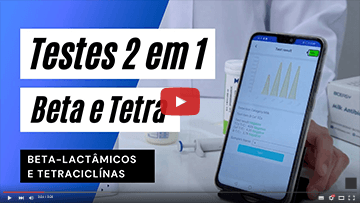Testing for antibiotic residues in milk: see the importance!
To maintain the health of the herds, it is essential to maintain a standard of milk quality.
A IN 77 estabeleceu padrões de qualidade que devem ser seguidos pelos profissionais da cadeia produtiva do leite. Entre eles, está o controle de drogas veterinárias no leite e a interferência que essas drogas podem ter na qualidade dos laticínios. Por isso, os resíduos antibióticos no leite são um dos grandes desafios enfrentados pelos profissionais da área nesse contexto. Encontra-se comumente esses resíduos entre sistemas intensivos de produção de leite e esse fator pode causar um grande impacto negativo para os produtores, pois os resíduos de antibióticos no leite acabam afetando sua qualidade, além de serem intensamente controlados pelas indústrias, quer pelo atendimento obrigatório da legislação brasileira, quanto pela necessidade do atendimento dos processos industriais.
As it is widely used within these contexts, to help maintain the health of herds, antibiotics end up being a fundamental part of maintaining the productivity of these animals.
Contudo, é imprescindível manter um padrão de qualidade do leite. E para isso, é necessário aguardar o período para eliminação do antibiótico secretado no leite e fazer testes que garantam a ausência de resíduos de antimicrobianos.
In this article, we talk a little about the importance of testing for antibiotic residues in milk and why create a work plan to identify the most efficient tests available on the market.
So, keep reading and check out the following topics:
- In what situations can antibiotic residues be found in milk?
- How to avoid contamination of milk by antibiotic residues?
- What are they and what is the importance of testing for antibiotic residues in milk?
- Why create a work plan to identify efficient tests for antibiotic residues in milk?
In what situations can antibiotic residues be found in milk?
Os antibióticos são muito utilizados hoje na cadeia produtiva do leite para tratar doenças e infecções bacterianas em rebanhos bovinos, como por exemplo, em infecções como a mastite, que é tão comum nesse contexto. Eles são responsáveis por garantir a sanidade do rebanho. Mas também para aumentar a produtividade das vacas leiteiras.
However, when milk contains residues of these antibiotics, it affects the quality of the milk and the safety for consumers of these products.
Milk that has antibiotic residues can be harmful to health, cause allergies (hypersensitivity), and even increase microbial resistance to veterinary drugs.
Utiliza-se muito os antibióticos no tratamento de doenças como a mastite bovina. Logo, se torna muito comum encontrar resíduos dessas drogas no leite dessas vacas, por alguns descuidos percebidos nesses processos.
Thus, it is important to understand in which situations antibiotic residues can be found in milk, in order to try to prevent this problem from occurring more and more.
Situations where antibiotic residues may be found in milk:
- Failure to comply with the withdrawal period indicated in mastitis treatments. The use of antimicrobials in bovine mastitis treatments is very common in the milk production chain. Therefore, residues of veterinary drugs are found very frequently in milk, because the drug withdrawal period is not respected;
- Improper disposal of milk. When the manifestation of mastitis infection is identified in only one quarter, for example, the drug is applied in that region, and the milk from that quarter is discarded. However, the error in this situation is that it is necessary to discard the milk from the other quarters, as it may contain antibiotic residues;
- Misidentification of treated animals, or failure to record relevant data. This can be considered negligence in the treatment process, which can make antibiotic residues in milk go unnoticed by professionals;
- Using wrong dosages of drugs in animals. This factor can lead to the appearance of residues in the milk due to the drugs administered;
- Carrying out inappropriate treatments, for example, when the cow is in the lactation period and the treatment administered is that of the dry cow;
- Milking on dry cows or from cows being treated with antimicrobials;
- Accidental mixing at milking times, from untreated cows and from cows being treated with antimicrobials.
How to avoid contamination of milk by antibiotic residues?
Despite being a great challenge for producers, it is possible to prevent these situations with the adoption of good agricultural practices and care in the handling and treatment of herds.
Let's look at some ways to avoid higher levels of antibiotic residues in milk:
- The first way to avoid the presence of antibiotic residues in milk is through the creation of bovine mastitis control programs. This care is essential, as mastitis is one of the most common diseases in herds;
- Fully respecting the stages of antibiotic deficiency, strictly following the guidelines for each veterinary drug is also essential to avoid residues;
- The separation of cows being treated from cows that are healthy at the time of milking is essential to avoid misidentification of animals;
- Follow the treatments in accordance with the guidance of the veterinary drug leaflet and avoid non-recommended treatments;
- Train milkers on the correct handling of medications in dairy cows;
- Analyze the milk to ensure compliance of the milk with Brazilian legislation
In all these situations it is possible to find antibiotic residues in milk, which can affect the safety and quality of dairy products.
What are antibiotic residues and why is it important to analyze them in milk?
In addition to all the good practices adopted to prevent contamination of milk by antibiotic residues, it is also essential that professionals in the area test for antibiotic residues in milk to further increase the safety and quality of the raw material.
But what is the antibiotic residue test? Antibiotic residue tests are control methods used to identify the presence or absence of residues in milk. In addition, they are essential tools in this milk quality assurance process.
Os testes feitos no leite para checar se há alterações, têm orientação pela IN 77, a normativa que estabelece os padrões de qualidade exigidos em todas as etapas da cadeia produtiva do leite, desde a produção, aos programas de autocontrole e sanidade dos rebanhos, até o manejo das instalações, os métodos adequados de armazenamento e transporte e a recepção e a análise laboratorial do leite.
The maximum residue limits (MRL) of antibiotics in milk are determined by specific legislation and generally follow the limits established by the Codex Alimentarius, an agency of FAO-WHO (Food and Agriculture Organization and World Health Organization).
Through screening procedures such as the collection of individual samples, which IN 77 indicates, antibiotic residue tests become a crucial factor in this process, and to establish the best methods, it is important to create a work plan to identify and apply these methods efficiently and satisfactorily.
Why create a work plan to identify efficient tests for antibiotic residues in milk?
The tests that are used to identify antibiotic residues in milk must follow the guidelines of the legislation that the country uses, which in this case are the determinations of the Codex Alimentarius, the FAO (Food and Agriculture Organization) and the WHO (World Health Organization). Health).
They establish a maximum residue limit (MRL) of drugs that may be present in food.
This limit is represented by ppb (parts per billion) or ppm (parts per million). And the determinations are important so that foods have a maximum residue limit that is not harmful to the health of the consumer throughout life.
Thus, using the test kits for antibiotic residues in milk that follow these determinations requires two basic conditions:
- Antibiotic residue analysis tests need to identify these residues below, or within the limit of Brazilian legislation;
- The tests must have their detection limits as close as possible to the established values, so that there is no unnecessary waste of milk.
It is always necessary to take into account the adequacy of these tests to Brazilian legislation, mainly because most of these references are from other countries where the context in which they work is totally different from what we find in Brazil. As an example, we give the American legislation, in which residues of Sulfonamides (Sulphas) and Fluorquinolones (Quinolones) are not tolerated, since these drugs are prohibited from use in the United States, that is, any presence of these residues results in discarding the milk , while in Brazil these drugs are allowed and consequently have established maximum limits.
In addition, as the IN 77 does not establish the method to be followed and only determines that the methods must comply with Brazilian legislation, it is essential that the choice be made for a method that complies with Brazilian legislation, guaranteeing the quality of the milk received, however who does not have the hypersensitivity that results in unnecessary discarding of the milk.
Therefore, before defining the most suitable test kits, it is important to create a work plan. That is, it is based on establishing the population, mapping and risk analysis, in order to find the most effective and appropriate methods in this specific context.
Test types
The main types of tests available on the market can be divided into rapid tests or screening tests, which bring only qualitative results (positive or negative), which are not capable of identifying the class of antimicrobials present, and confirmatory tests, which involve a longer process.
In the case of bovine mastitis, which is one of the main causes of antibiotic use in herds, the most used screening tests aim to identify beta-lactams (penicillins, cephalosporins), as they are the most common antibiotics in the treatment of this type of disease.
Other types of veterinary drugs also used are:
- tetracyclines (oxytetracycline and chlortetracyclines);
- aminoglycosides (streptomycin, neomycin, gentamicin);
- macrolides (erythromycin, spiramycin, tylosin);
- sulfonamides (sulfamethazine, sulfadiazine);
- quinolones (enrofloxacin, ciprofloxacin, danofloxacin, marbofloxacin).
However, rapid tests commonly put into perspective the issue of false negatives, false violatives and false positives, which end up being a challenge for professionals in the area, since results in this sense can lead to an inadequate judgment of the analyzed sample. , let’s interpret each of these cases:
- Falso negativo: O leite analisado têm resíduos de antibióticos acima dos níveis máximos da legislação, porém o método utilizado não tem a capacidade de detectar estes resíduos e liberam o leite como apto para o consumo, neste caso temos os riscos do consumo de um produto inapto para o consumo e também causarão problemas no processamento deste leite ocasionando perdas industriais.
- Falso positivo: O leite não contém resíduos de antimicrobianos, porém o teste aponta o resultado como positivo, como se houvessem resíduos de antimicrobianos. Este tipo de método resulta no descarte desnecessário do leite analisado, ocasionando perdas desnecessárias para o produtor de leite e perdas para toda a cadeia.
- Falsos violativos: Este conceito foi criado pelo FDA (Food and Drug Administration) do Estados Unidos para identificar uma categoria específica de testes, aqueles que identificam a presença de resíduos de antibióticos no leite, que estão presentes na amostra, porém estão abaixo dos limites máximos da legislação, sendo que nestes casos o leite também poderia ser considerado apto para consumo, para estes casos o FDA desenvolveu um método de confirmação, para minimizar o descarte desnecessário de leite.
Thus, when the company creates a work plan suited to the reality of each of the groups, identifying the ideal test becomes easier and the incidence of false-negative, false-positive and false-violent results is greatly reduced, resulting in safer results with less waste for producers and industries.
Improved suitability of tests for identifying antibiotic residues in milk
Os kits de teste de resíduos antibióticos no leite da Somaticell, desenvolvidos especialmente para o mercado brasileiro, consideram esses aspectos citados anteriormente.
In addition, Somaticell understands the need to create a work plan in order to meet the target audience to which it is necessary to apply the test, find the best solutions and better apply the tests to bring satisfactory results, with more security and lower costs.
Other aspects, such as the scientific basis, are also important to ensure the best results in the test. And they are present in the company's services. Well, the tests are in accordance with the legislation determined by the Codex Alimentarius to operate in Brazil.
Os testes da Somaticell possuem garantias de não apresentarem resultados falso-positivos ou falso-negativos e agirem dentro do limite máximo de resíduos (LMR), minimizando também a ocorrência dos resultados falsos violativos, Para a análise dos antibióticos mais utilizados para o tratamento da mastite existe a solução do kit 2 em 1, Bete+Cefalexina+Tetraciclinas com o controle de 100% dos princípios ativos destas famílias de antibióticos (beta-lactâmicos e tetraciclinas).
In this way, the specific tests, produced using the immunochromatography methodology (specific antibody linked to a colored receptor) identify all the active principles present to track whether there are antibiotic residues, from which families, avoiding discards and increasing the safety of dairy products.
Somaticell's solutions are complete and efficient, focusing on the highest quality of products and the greatest safety for consumers.
Now that you know what they are and why testing for antibiotic residues is important, why create a work plan to identify efficient tests for antibiotic residues in milk, and why use Somaticell's cutting-edge methodology, it's time to take the plunge. best decision for your business and avoid waste, increase product safety and get better results for your dairy activity.
If you want to know more information about our services, contact us right now!
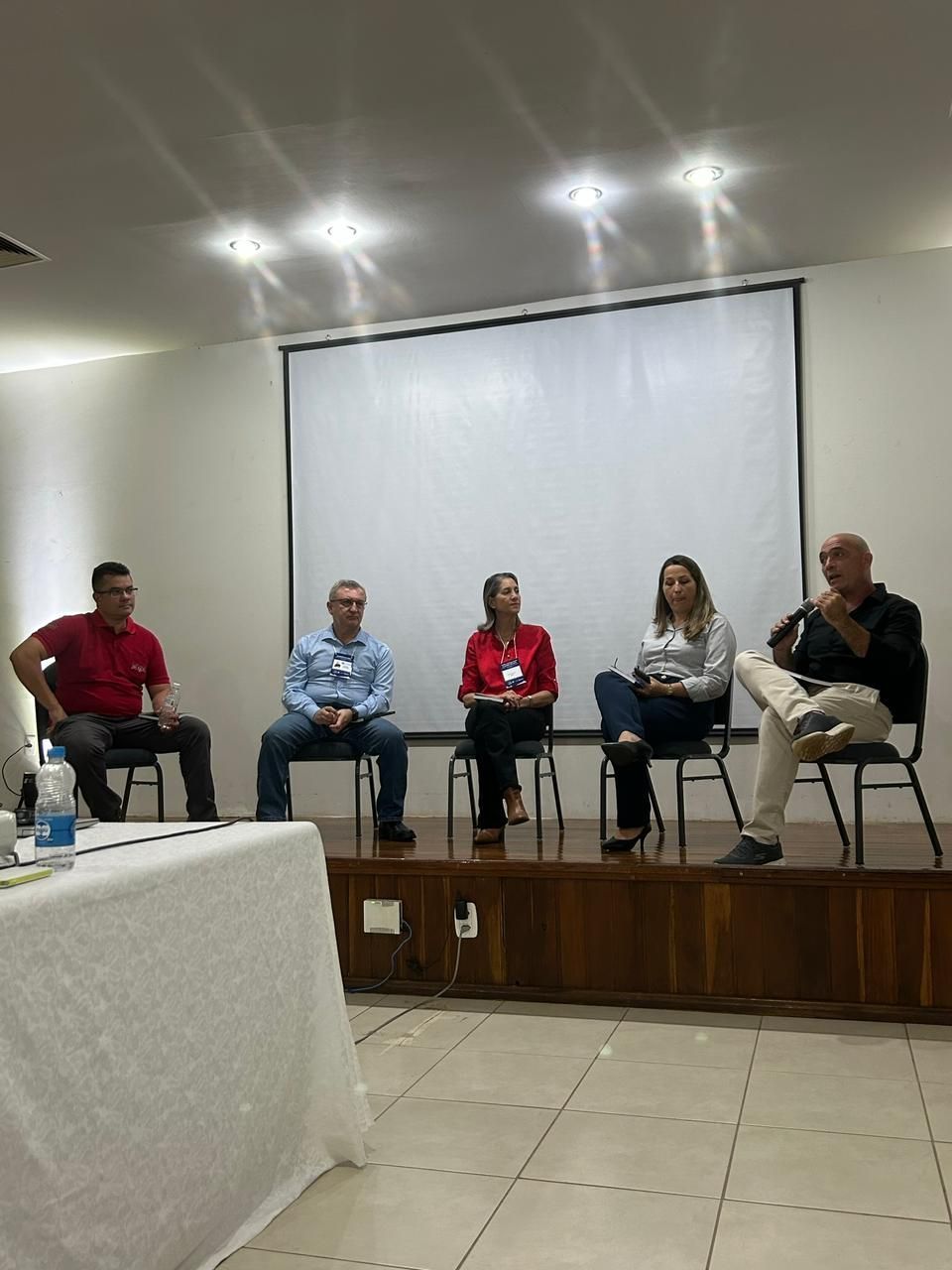
Conheça nosso App

Our Educational Videos
Somaticell on Social Networks



